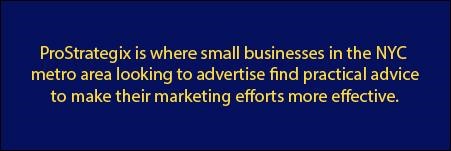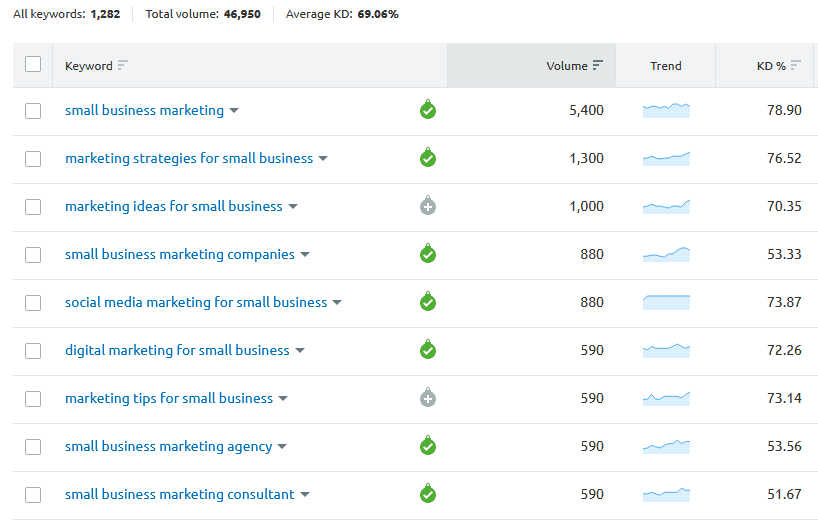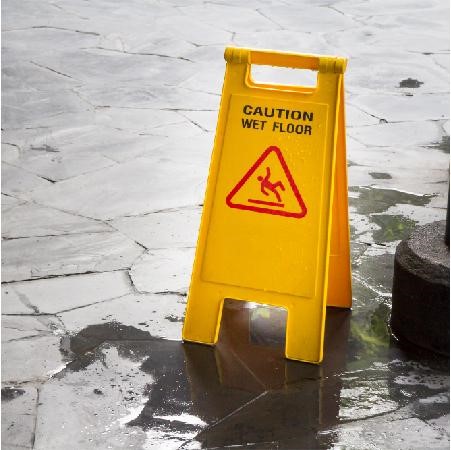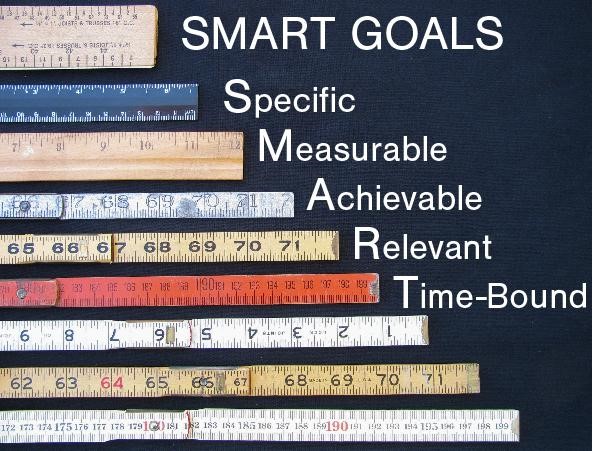#1 Content Marketing Mission Statement is NOT Aligned with Your Business Mission and Goals
The first major blunder people make is not aligning your content marketing mission statement with your business mission statement and goals. At best, you are less effective. At worst, you can be sabotaging yourself.
Business Mission should be simple.
A mission statement answers three basic questions. Who are you? What do you do? Why do you do it? A straightforward framework to use is: [Company A] is the [Business Category] that does [Reason for Being – Main Service/Solution] because [Why you exist].
This 15-second clip illustrates the concept for Disney, compliments of Hubspot.
Business Goals should be SMART.
For business goals to be effective, they need to be Specific, Measurable, Achievable, Relevant, and Time-bound. A simple example is: to increase traffic to our service pages by 20% within 3 months. This methodology has been around for ages, but it is still in use because it’s effective.
Content Mission Statement Helps You Stay Focused
Many people believe if I write it, they will come. While that may happen, it’s WHO comes that is important. Are your readers the right readers to help you achieve your business objectives? How do you know?
A Content Mission Statement is Simple
My favorite is A. Crestodina’s, which follows a basic format: “Our Company is where [Audience X] finds [Content Y] for [Benefit Z]. It’s that simple, but it’s that hard. There is quite a bit of valuable strategic information packed into that tiny sentence.
Content mission statements are not usually published, but we can use ours as an example.

In this example, you can see that our audience X is small businesses in New York City where they can find, Content Y, practical advice for Benefit Z, making their marketing more effective.
Get FREE Digital Marketing Courses and Tutorials Here!
Why a Content Mission Statement is Important and Why You Should Have One
The beauty of a content mission statement is that it is the intersection between what you want to say and what your readers want to consume. It keeps you focused on that intersection, so you don’t deviate away and become less relevant.
Three key pieces of strategic information are tucked away in a content mission statement. First, it requires you to define your target audience precisely. Second, it requires you to be clear on the content you will provide vs. not provide.
Content marketing requires a significant investment in time, and this makes sure you use it wisely. Finally, it forces you to be clear on what benefit you provide to your audience. This is critical because if it doesn’t provide value to your audience, it won’t provide value.

#2 Biting Off More than You Can Chew – Setting Realistic Keyword Targets
The second blunder many people make is writing content for keywords they have little chance of ever being in the top 10 or top 25. Some simple guidelines can help you find the right keyword targets for your business.
Know your Domain Authority (DA)
Back in the day, Google used to provide DA scores. It no longer does. Several free tools exist that estimate your DA. If you search for the term “Free Domain Authority,” you can pick the best suits your needs.
Domain authority is important because it is a key factor determining how much clout your site has on a given keyword. The scores range from 0 to 100. DA between 40 and 60 is considered good. A DA above 60 is outstanding. Many small businesses are below 40. It takes time and effort to build your score, which is another reason staying focused is key.
This is an example of SEMRush, one of the tools you can use to estimate your DA or AS (Authority Score). Moz and Ahrefs are two others.

Setting Realistic Keyword Target Goals
A few rules of thumb exist when it comes to DA and keyword (KW) difficulty. If you have a DA less than 30, you probably should be targeting KW with less than 100 searches per month. If you are between 30-50, you are more likely to be successful in targeting KW with under 1,000 searches per month. You will need a DA score of at least 70 if you want to compete effectively for KW with over 5,000 searches per month.
Here is an example of a typical KW report. This uses the keyword small business marketing:

When you look at this report, a couple of things jump out at you. First, you see, it’s a very competitive keyword. Second, while six falls below 1,000 searches per month, only three are truly achievable.

This is “A” in your SMART goals. If your goal is misaligned, you should change it. You could waste a significant amount of time and money trying to chase a KW that is out of reach. Your time would be better spent on increasing your DA.
#3 Getting Lost in the Crowd Because You Lack a Clear Editorial Point of View
Your readers literally have millions of places to go for information, so why you? If you haven’t looked at your content in a competitive context, that’s a major blunder.
Content Marketing Positioning Statement
There isn’t enough time to cover all these concepts in one post, so we will only touch upon positioning.
People only have so much storage space in their brains. Therefore, our brains save space by categorizing similar things. Positioning is about how you are seen within your category.
If you don’t define that valuable real estate, it’s easy to get lost or forgotten. A positioning statement is how you help your reader classify you within the category file in their brain.
Writing a Content Marketing Positioning Statement
There are several simple templates you can use to write a content marketing positioning statement. However, they all follow a similar pattern, with some slight deviations.
For [Target Audience], [Your Company] is the [Category (brain file)] that provides [unique benefit], and that’s because [1-2 points of rationale]
Positioning statements are highly confidential for obvious reasons. However, for the sake of an example, I created a fictitious but realistic one.

There is a theme throughout this post. Focus. Focus. Focus. Both the mission statement and the positioning statement help you stay focused. This way, you don’t get lost.
#4 Failing to Have a Clear Content Calendar
All of the work above could be for nothing if you lose focus on implementing your content strategy. It’s akin to trying to find a location without a map. Eventually, you may get there, but
You’ll definitely get there faster when you know where you are going.
Risks of Not Having a Clear Content Calendar
You face two major risks if you try to execute a content marketing plan without a calendar.
- The topics you provide don’t fit together nicely, so it’s hard for your audience to follow. A good metaphor is wandering through the woods. Some may enjoy the view and stick with you. Others may get frustrated and leave.
- You use the same medium or spend too much time on one single topic. The metaphor here is striking the same chord. It may sound beautiful at first, but after a while, it becomes annoying.
Why Mixing Content Elements & Media is Important
Not everyone likes to consume information in the same way. Providing multiple formats can help you meet the tastes and needs of your audience. It allows you to provide variety without a loss of focus.
#5 Lastly and Sadly, Poor Execution

So much work can be chucked if you blunder on the execution. The best mission and positioning statements, calendar, and keywords can be naught if someone hits send or posts poorly.
There are three key reminders on execution:
- Rushed content equals poor content. Yes, everyone has deadlines. Sometimes a rush is unavoidable. However, it would help if you tried your hardest to make this the exception, not the norm.
- Bad Headline. If you are using social media to help with your content marketing, a poor headline can sink your efforts. There are several free headline checking tools. I suggest you use one.
- Failure to Measure. If you are putting out content but not measuring the results, that’s a big mistake. You could be putting too much emphasis on one area and not enough on another, wasting both time and money. Remember, your audience is always telling you what they want, so make sure you are listening.
conclusion
In summary, you will get more out of your content marketing if you can avoid these 5 major blunders.
Content and Business Missions are not aligned: At best, you will be inefficient. At worst, you will be counterproductive. Unrealistic KW goals: Remember to use your DA to help guide your KW strategy. If you can’t get the KWs you want, focus on increasing your DA.
Lack of Competitive Differentiation: The mantra of this is to focus. A content marketing positioning statement will help you do that and be relevant. Lack of Direction: As above, a calendar keeps you on task and target.
Poor Execution: Don’t drop the ball at the last minute. You’ve done such hard work to get here. It’s never just a post or a tweet. Make every action count.








